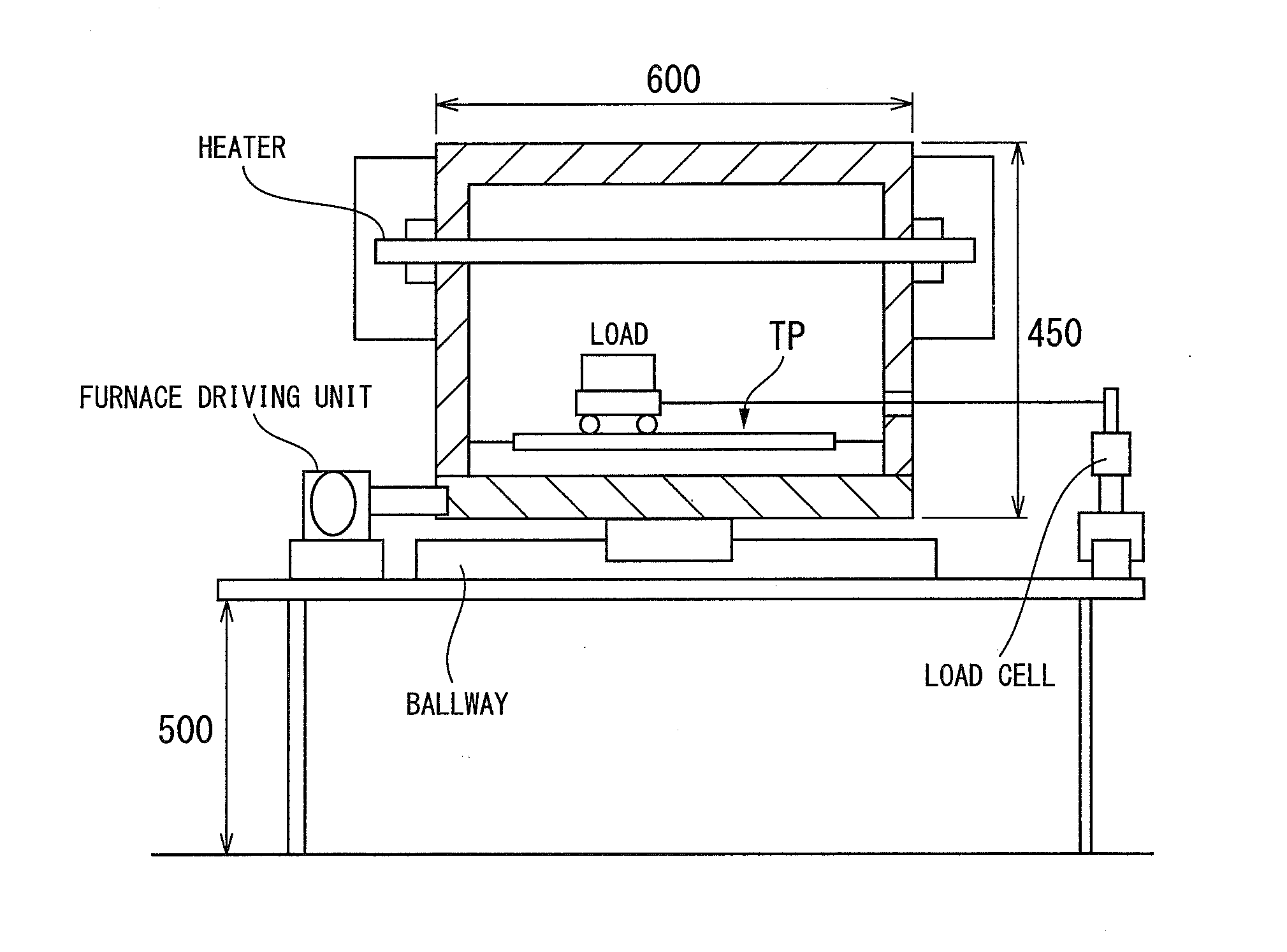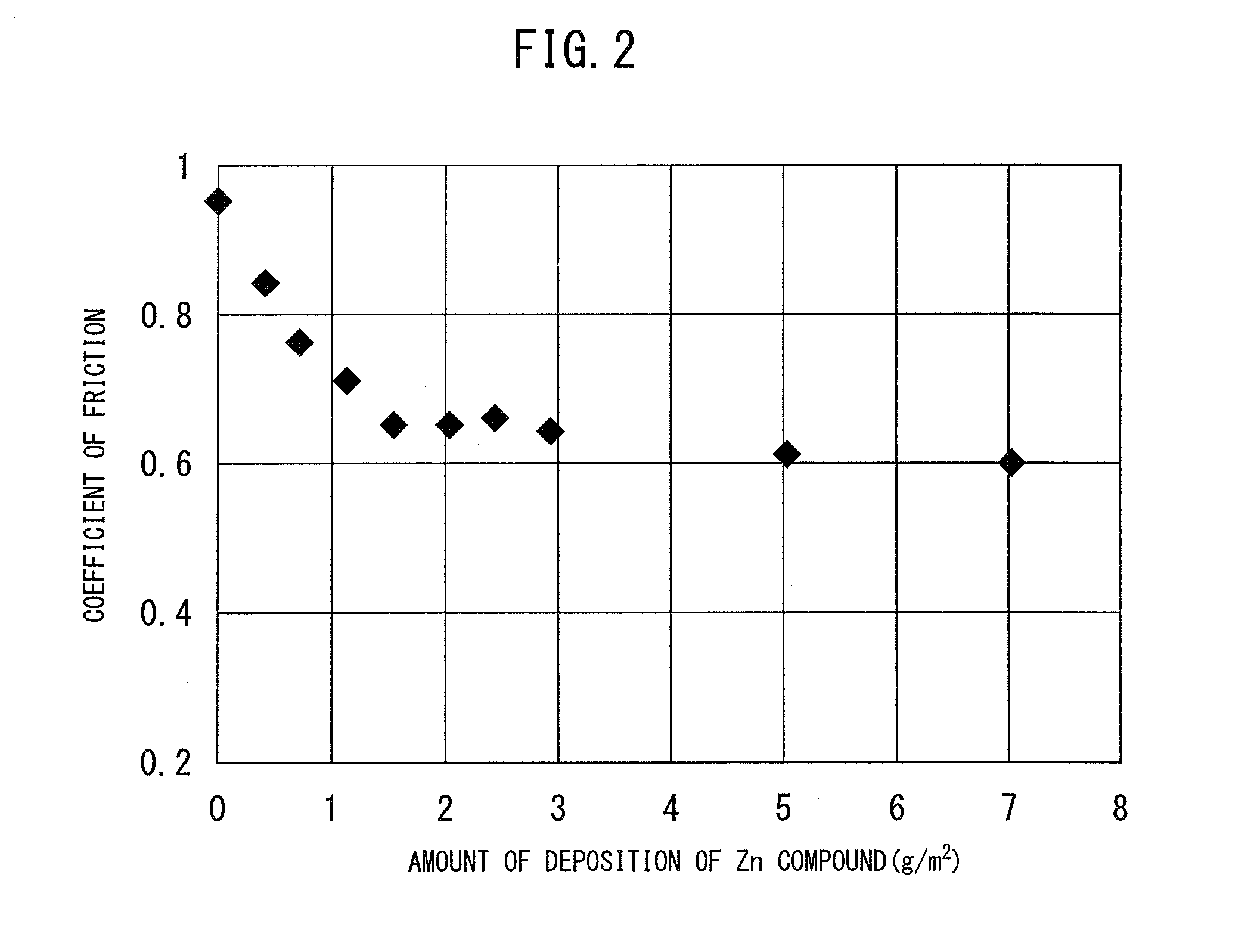Plated steel plate for hot pressing and hot pressing method of plated steel plate
a technology hot pressing method, which is applied in the field of plated steel plate, can solve the problems of not being able to reduce the weight of steel sheet, not being able to realize the lighter weight of the chassis in terms of product performance, and high mechanical strength, and achieves excellent hot lubricity, spot weldability, and corrosion resistance. corrosion resistance, the effect of improving the productivity of the hot press step
- Summary
- Abstract
- Description
- Claims
- Application Information
AI Technical Summary
Benefits of technology
Problems solved by technology
Method used
Image
Examples
example 1
[0082]A cold rolled steel sheet of the chemical composition which is shown in Table 1 (sheet thickness 1.4 mm) was used. This cold rolled steel sheet was plated with Al by the Sendzimir process. The annealing temperature was made about 800° C., the Al plating bath contained Si: 9%, and Fe which was eluted from the cold rolled steel sheet was contained. The amount of deposition of Al after plating was adjusted by the gas wiping method to 160 g / m2 at both surfaces. After cooling, a suspension or aqueous solution which was shown in Table 2 was coated by a roll coater and was baked on at about 80° C. to produce a test material. Note that, each solution which is shown in Table 2 was obtained by using reagents and mixing them with distilled water to form a suspension or aqueous solution.
[0083]The characteristics of the thus produced test material were evaluated by the following methods. Note that, the average temperature elevation rate when heating to 900° C. was made 5° C. / sec.
[0084](1) ...
example 2
[0095]A treatment solution was prepared by changing the ratio of addition (%) of a urethane resin to a suspension which contains the Zn compound of A of Table 2 with respect to the Zn(OH)2. This was applied to the Al plated steel sheet of Example 1 to form a surface coating layer and prepare a test material. The baking conditions were the same as in Example 1. Further, the adhesion of this test material was evaluated. The methods of evaluation were the same as Example 1 except for the evaluations being performed before the heating. That is, the test material was cut to 50×50 mm and subjected to a wrapping test. The method was to run gauze to which 1.5 kgf (1 kgf is 9.8N) of load was applied back and forth 10 times over a 30 mm length, measure the amount of deposition of Zn before and after the test, and calculate the amount of reduction %.
TABLE 5Table 5. Coating Adhesion Before HeatingResin ratio0%5%9%16%28%50%Adhesion before20%5%1%0.2%0.2%0.2%heating
[0096]The results are shown in T...
example 3
[0097]A steel sheet for hot press use of the present invention which was formed using a treatment solution which contains the Zn compound of No. 1 in Example 1 was used. An infrared ray furnace was used to heat the steel sheet by an average heating rate of 30° C. / second to evaluate the characteristics of the test material. The methods of evaluation were similar to the methods which were shown in Example 1 except for the heating method. The results of evaluation are shown in Table 6. The coated corrosion resistance was superior to the case of No. 1 as a result. It could be confirmed that the rapid heating method was effective.
TABLE 6Results of Evaluation at Time ofApplication of Rapid HeatingHotCoatingSpotCoated corrosionCompoundlubricityadhesionweldabilityresistanceA0.757%2.0 kA0.9 mm
PUM
| Property | Measurement | Unit |
|---|---|---|
| temperature | aaaaa | aaaaa |
| temperature | aaaaa | aaaaa |
| temperature | aaaaa | aaaaa |
Abstract
Description
Claims
Application Information
 Login to View More
Login to View More - R&D
- Intellectual Property
- Life Sciences
- Materials
- Tech Scout
- Unparalleled Data Quality
- Higher Quality Content
- 60% Fewer Hallucinations
Browse by: Latest US Patents, China's latest patents, Technical Efficacy Thesaurus, Application Domain, Technology Topic, Popular Technical Reports.
© 2025 PatSnap. All rights reserved.Legal|Privacy policy|Modern Slavery Act Transparency Statement|Sitemap|About US| Contact US: help@patsnap.com



